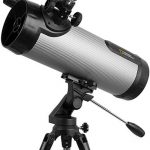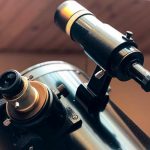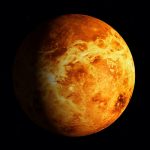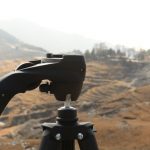Best Telescopes For Deep Space Viewing
Are you on the lookout for the best telescopes for deep space viewing? You’ll probably already be more than aware you need the most aperture you can get for your scope if you are. Because wider apertures mean more light collection; therefore, the fainter the object you can view.
Viewing deep space objects is great fun, and it can become very addictive checking out the Universe’s wonders. With the best equipment, you can view galaxies and nebulae so far away from Earth that distances seem unimaginable.
However, you might be tempted to buy the biggest telescope with the widest aperture you can afford. Doing that might be a mistake, though, because, as we said, a bigger aperture means you can observe objects further away from us.
But what if you choose a telescope that’s just too big and heavy for you to transport around and set up? Portability is just one factor you need to consider if you’re buying the best telescope to see galaxies.
We can help you choose the best telescope for deep space viewing with this guide reviewing some excellent deep sky observing telescopes. So let’s take a closer look at the telescopes we recommend.

Our Top 3 Best Telescopes For Deep Space Viewing
1. Orion SkyQuest XT6 Classic Dobsonian Telescope Kit
The Orion SkyQuest XT6 is a telescope that fits the prerequisites of what we believe makes an excellent telescope for viewing deep-sky objects. The 6-inch aperture is wide enough to gather plenty of light, it’s portable enough for anyone to transport and set up, the quality is excellent, and the price is not excessive.
It might be a little clearer to view the Andromeda Galaxy through an 8-inch telescope. However, the Orion’s 6-inch aperture still offers a massive amount of detail, not just for the Andromeda Galaxy either. The Orion Nebula shows some great detail, and star clusters such as the Pleides are impressive; you’ll need a wide field of view eyepiece to get the best results.
I mentioned portability being an essential factor, and that’s accurate. While the Orion XT6 is around 48 inches long, it does come in two parts – the telescope and base are separate components – it’s straightforward to put together. Even the less experienced can put everything together in less than 30 minutes.
So this telescope is at the outer limit of what I consider portable; however, it’s feasible, and the XT6 does have an excellent highly-stable Dobsonian mount.
Unfortunately, out of the box, this telescope doesn’t include a finderscope. There is a red dot finder, but for viewing deep-space objects, that’s not much use; however, you can purchase a finderscope separately, and even adding in the cost of that, this telescope is still an excellent price.
Another little niggle is only one eyepiece. The one the company supplies is a 25, Plössl. At the same time, there’s nothing wrong with the eyepiece; you will need to add some additional eyepieces to give yourself better viewing options.
Overall this is an excellent budget telescope for deep space viewing, which is why we have included this one in our guide. However, there are extras you’ll need to buy, such as eyepieces, a finderscope, and some filters.
Why We Like It: The XT6 offers an excellent budget entry point into viewing deep-sky objects, even allowing for no finderscope and only one eyepiece.
Key Features – Orion XT6 Dobsonian Telescope:
- Entry-level price
- Stable mount
- Straightforward setup
- 6-inch mirror
- Capable of viewing brighter DSO’s
- 2 x Shorty Barlow Lens
- Included Beginners Stargazer’s toolkit
2. Celestron NexStar 6SE Telescope
If you aim to view parts of the solar system and deep-sky objects, then let me introduce you to the NexStar 6SE Telescope from Celestron.
The NexStar 6SE is a brilliant telescope for beginners making their first tentative steps into amateur astronomy but is equally beneficial to more experienced astronomers. With such an excellent telescope, the investment is undoubtedly worth the money because you won’t find yourself tiring of this scope very quickly.
I say this because of the abundance of accessories you can add to the telescope, for example, filters, finderscopes, eyepieces, etc. These items are all necessary so that you will improve your observing potential.
If you think astrophotography might be your next step, you have chosen a telescope to help you fulfill that wish; however, depending on the camera you will use, you will need some extra accessories. For example, if you want to take images with your iPhone or Android, you need a smartphone adapter. If you’re into shooting pictures with a DSLR, You’ll need some accessories such as an intervalometer to shoot multiple long exposures and a T-ring adapter.
The computerized alt-azimuth fork mount is heavy on battery usage, which is quite a drawback in terms of cost. There’s no AC power cord included in the telescope purchase. You could always buy one as an add-on; it will save you constantly spending money on eight AA batteries in the long run.
The NexStar 6SE is not a lightweight and hits the scales at almost 10 kilograms, that quite a bit of machinery for one person to handle on their own. However, you get the feeling the weight adds legitimacy to the quality build of the 6SE. The telescope sits nicely on its robust steel tripod.
The telescope’s star alignment utilizing Celestron’s SkyAlign technology works exceptionally well and is straightforward to use, and you can set this up very rapidly.
The NexStar 6SE has excellent optics with StarBright XLT optical coating delivering bright clear, and sharp images.
You can operate the mount manually or with the computerized system; there are nine speeds in total. You might find the noise level a little irritating, especially when you have it operating in a fast setting.
We mentioned astrophotography earlier in the review, and the 6SE has lunar, solar, and sidereal tracking, which does work as advertised.
Why We Like It: The 6SE has excellent alignment technology, which removes the need to calibrate the telescope, and the GoTo system is accurate when searching for targets.
Key Features – Celestron NexStar 6SE:
- Computerized telescope
- 6-inch aperture
- Fully automated GoTo mount
- 40,000 celestial object database
- Straightforward assembly
- Astroimaging
- Multi-point alignment
- Starry Night educational software
3. Celestron – NexStar 8SE Telescope – Computerized Telescope
The Celestron NexStars are some of the best overall general-purpose telescopes you’ll find anywhere for the price; there are 4 inches, 5-inch, 6-inch, and the one we’re reviewing in this article, the 8-inch. As you would naturally expect, the NexStar 8SE is the heavier and bulkier version; however, you’ll find viewing through this telescope everything is much brighter and appears more prominent.
The NexStar 8SE is a compound telescope that’s motor-driven and, as just mentioned, has an 8-inch aperture. You can see DSOs and galaxies in much sharper detail with the 8SE. What’s more, the telescope weighs only sixteen pounds, so that you can transport the instrument from one location to another very easily.
The telescope’s GoTo tracking is straightforward to set up using SkyAlign, and the NexStar range incorporates over 40,000 celestial objects available for viewing. Engaging the computerized motor ensures the telescope will find your chosen object and track it constantly with no danger of it falling out of the eyepiece.
There are two slight negatives you should be aware of; although they don’t detract from the telescope’s ability and build quality, nevertheless, they are niggles that shouldn’t be there.
Firstly is the lack of a decent quality finderscope; instead, you will get an inexpensive red-dot finder; that, frankly, doesn’t do the telescope justice. Second is the battery usage for computerized tracking. You will want to use this system, so prepare to purchase an alternative energy source other than the eight AA batteries the system operates.
The 8SE comes with a 25mm eyepiece providing 85x magnification. Naturally, you will buy additional eyepieces to suit when you begin observing with the scope.
An 8-inch aperture is an ideal size for viewing DSOs. You’ll be pretty shocked with what you can see with this telescope, and this includes several galaxies and nebula with a limiting stellar magnitude of 14 that allows for a decent range. Stellar magnitude is a measure of the brightness of stars or celestial bodies. The brighter they are, the lower the number. For example, the faintest stars viewed through the most powerful telescopes have a stellar magnitude of 20.
The NexStar 8SE is an excellent deep space telescope; it has an 8-inch aperture in a short, portable tube with computerized tracking.
Why We Like It: The 8SE is portable and straightforward to set up with 8 inches of aperture that reveals many deep-sky objects.
Key Features – Celestron 8SE:
- Computerized telescope
- 8-inch primary mirror
- Automated GoTo mount
- Features a 40,000 database of celestial objects
- Straightforward to assemble
- Tracks celestial objects
- SkyAlign technology
- Sturdy steel tripod
Conclusion
Choosing any one of these fantastic stargazing telescopes will allow you to view deep space objects from the comfort of your own backyard.
Needless to say, stick within your budget and buy the best telescope you can afford. If you love astronomy, you’ll never regret the purchase.






















